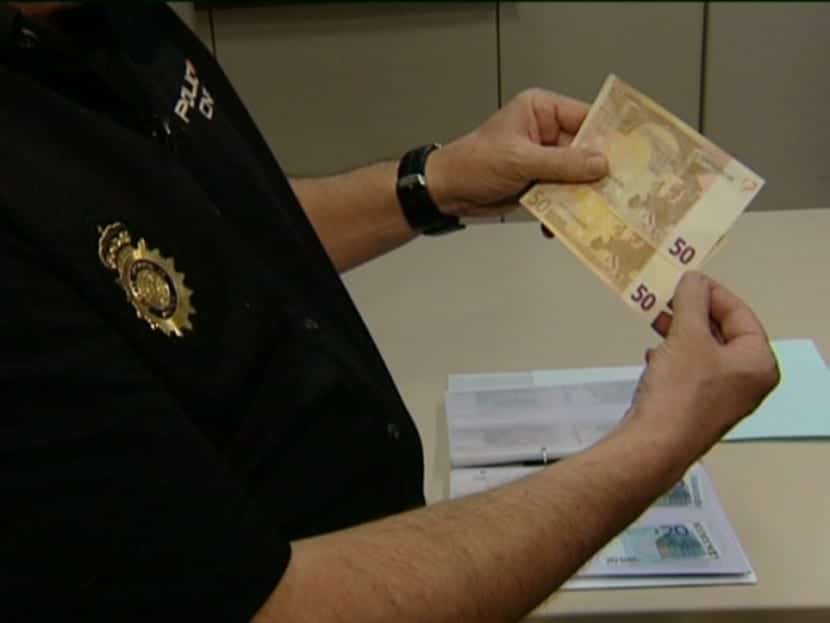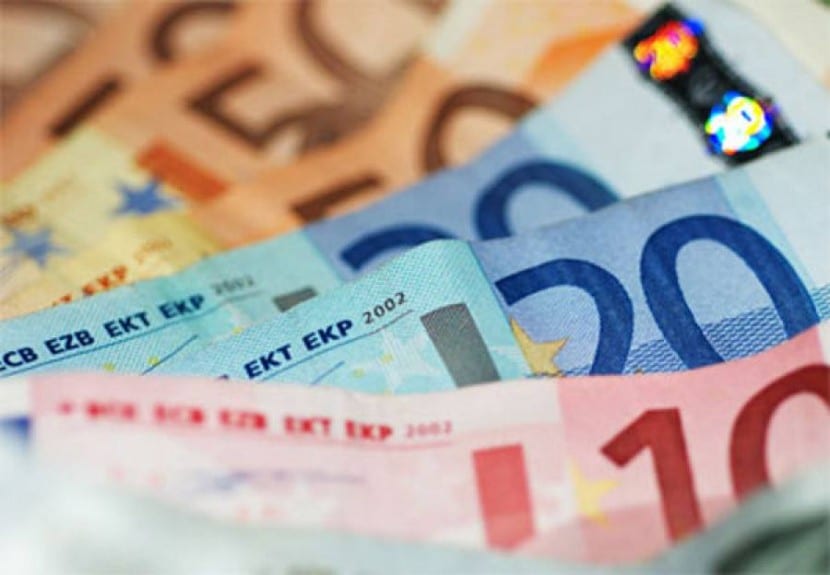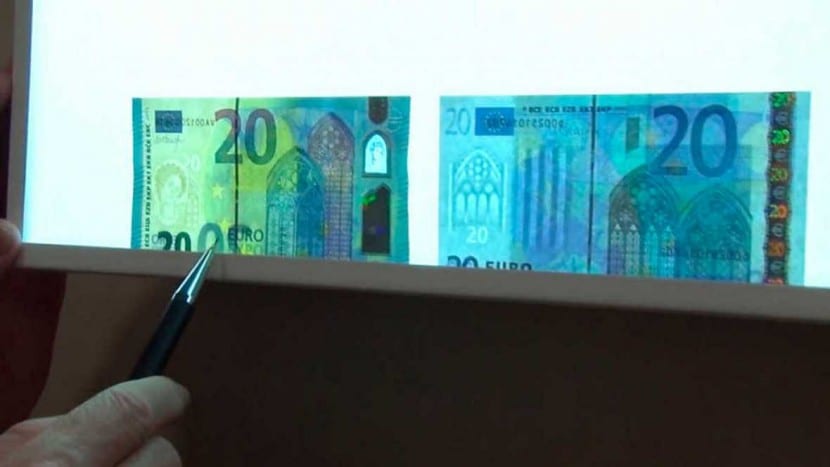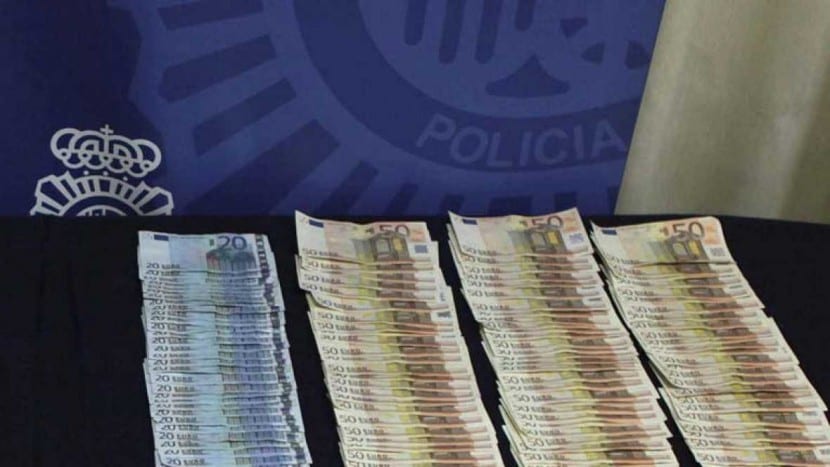
In Europe we are 18 countries using a common currency: the Euro. Unfortunately and quite commonly, we can find that a ticket is fake of this current currency. It usually happens with the most used bills such as the 5, 10, 20 and 50, but there are also cases of coins or some large bills.
As indicated by the European Central Bank, which is the one who mints and prints our community money, they exist in circulation throughout Europe around 670.000 counterfeit notes. How to prevent one of those bills from reaching our hands? You cannot, unless we are always aware of the money they give us in cash changes or any other way. What we can control is the way detect when a bill is counterfeit.
Once a bill arrives in our hands it is false and we have identified it, the logical and ethical thing is to remove it from circulation. If the ticket is delivered to us at a checkout line in a supermarket or other establishment, we must refuse to pick it up and of course urge that it be removed so that no other customer or user receives it.
How can we detect if a bill is counterfeit?
Imagine that you are shopping at the supermarket or have finished filling your car's tank with fuel, or in any other establishment and that already at the cash register or about to pay, the banknote detector says that yours, with a value of 50 euros, it is false! What an embarrassment! but how is it possible ?! How is it that it is false, but if it is the same as the others?
Most of us instead of feeling cheated, we feel guilty as if we had created that false bill ourselves, at home, in the secrecy of the night, when everyone is asleep. We look for a thousand excuses to excuse that we have a banknote that is not legal, instead of understanding that someone else made the decision to cheat by creating it and spreading it together with thousands more throughout Europe.
Now, how can we avoid putting a fake bill in our purse or wallet? Checking should be taken as a custom, therefore, when we receive tickets for a change at the cash register or even from an ATM or when in our business we receive a cash payment, we must review them and the correct way is above all visual and tactile.
We are going to put into practice the steps that the ECB itself recommends, to get used to checking the banknotes on a regular basis, so that habit makes us an expert to a lesser extent and we will be able to distinguish more or less quickly if the banknotes are suspicious , which at least is already a step.
Check your bills, use them for practice, take them out of your wallet. Observe and touch them. Take your time. Remember: you have to sound, must look and you have to turn the ticket.
Let's touch the bills

All banknotes that are printed by the ECB have relieve, in such a way that when you pass your finger over them, it is very easy to notice it. They are not thin like normal paper, but rather have a distinctive and unmistakable rough touch. This one usually embosses we can detect it in:
- The main image of the ticket
- In the most prominent letters of the banknote
- As well as in the figure of the value of the ticket.
If your banknote has these three types of relief, the banknote It is not false. But this is just one of the things to keep in mind. There is more.
In addition to having a rough feel, make sure that your banknote has smooth touch, that is, hard or tense to the touch, that does not look like a "soft" paper to the touch.
From time to time, the ECB issues series of new banknotes and in this case, the new series called Europe Series, is designed with two bands with relief on the front of the banknote on the left and right.
You have to get used to touching the bills, so that when we touch them, by default and almost without realizing it, we notice if they are false or not.
Let's take a good look at the tickets
The next step to determine if our bill is false or not, is to look and look carefully. We are going to train our eyes to define the falsity or not of our money on paper.
How can we see with the naked eye that the bill is correct? Putting it up to the light, that is, approaching a light source (a window, a lamp, etc.) and checking what we see through it.
We are going to look at three prominent terms that will tell us if our bill is false or not: the watermark or white part, the security thread and coincidence reason.
THE WATER BRAND

You have to look at the left of the ticket, where there is a white part which is called watermark and see this:
- You have to see an unclear image, like fuzzy from a window
- In the same white part, the value of the ticket must also appear
- On the new banknotes with a value of 5 euros, you can also see the image of Europe, which is a famous character from Greek mythology.
THE SECURITY THREAD
The banknotes incorporate a security system known as "security thread”. It is located right in the middle of the banknote, vertically (in the banknotes of the first series) and can be detected on both sides of the bill just by passing your fingernail over this part of the bill. In the case of banknotes of the Europe Series, the security thread is also located in the middle of the banknote, but it does not occupy the entire verticality of it, but only 1/3.
The security thread should read:
- El value of the ticket
- The word "euro"
- In the new series the euro symbol appears: €
REASON FOR COINCIDENCE
The matching reason is found on the left side of the banknote, on the obverse (the back) and on the right side of the on reverse (or front part). Also looking at the light, we have to see the figure with the value of the ticket.
Let's spin the ticket

The next way to check if the banknotes that we have in our wallet or in our box are false, is to look at the back of the bill and verify certain indications that we give below, to detect falsehoods.
- On the right side there is a silver band where the value of the banknote must appear, or the name or the euro symbol (€).
- On the same band, look closely and see if the europe portrait, which is a character belonging to Greek mythology.
- If the ticket is 5 euros and it is one of the new ones, the Europe Series, you can see in the part less for the hand (always looking at the banknote from its front, that is, the front) the figure of the ticket bright reflecting a greenish or bluish color.
Europe Series
We have talked about the Europa Series, which is a series launched by the ECB with highly advanced security measures, precisely to prevent counterfeiting.
But how do I know what a Europa Series ticket is? Well, we will analyze each of the banknotes in this series: 5, 10 and 20 euros.
- 5 Euro bill: at the bottom center the word Euro appears in three languages: Latin (Euro), Greek (EypO) and Cyrillic (Ebpo). On the right side, the silver line disappears and a color line where they appear among others, the europe portrait, from Greek mythology and the number of the value of the banknote, a 5. In the upper left where the number 5 and the European flag appeared, now only the European flag appears and below a signature.
The number 5 in large size that was previously in the central part, now appears more to the left.
An easier way to find out is the date. In the first series, the year appears 2002 and the year appears in the Europa series 2013. - 10 and 20 euro ticket: in both cases the same happens as with the 5, and they are also distinguished by the date that appears on the ticket.
To take precautions
It is not a question of becoming paranoid and thinking that each bill is false, but if we get used to the touch and the guidelines given above, just one look will be enough to detect it.
Generally, we do not pay much attention to the tickets with which we pay or with which they pay us or give us the change, but it is important to educate the touch and the eye to avoid ending up with one of these fictitious bills.
Do not feel bad about receiving one or more bills and be suspicious while we review it to verify that it is false. Remember that if you put it in your pocket or purse, the problem will now be yours and if in another establishment they detect it as false, the one who will lose that money will be you.
With these precautions, we will not only avoid an embarrassing moment when paying, but we will also prevent them from continuing in circulation and deceiving other people who may not be able to verify their legality, such as elderly people.